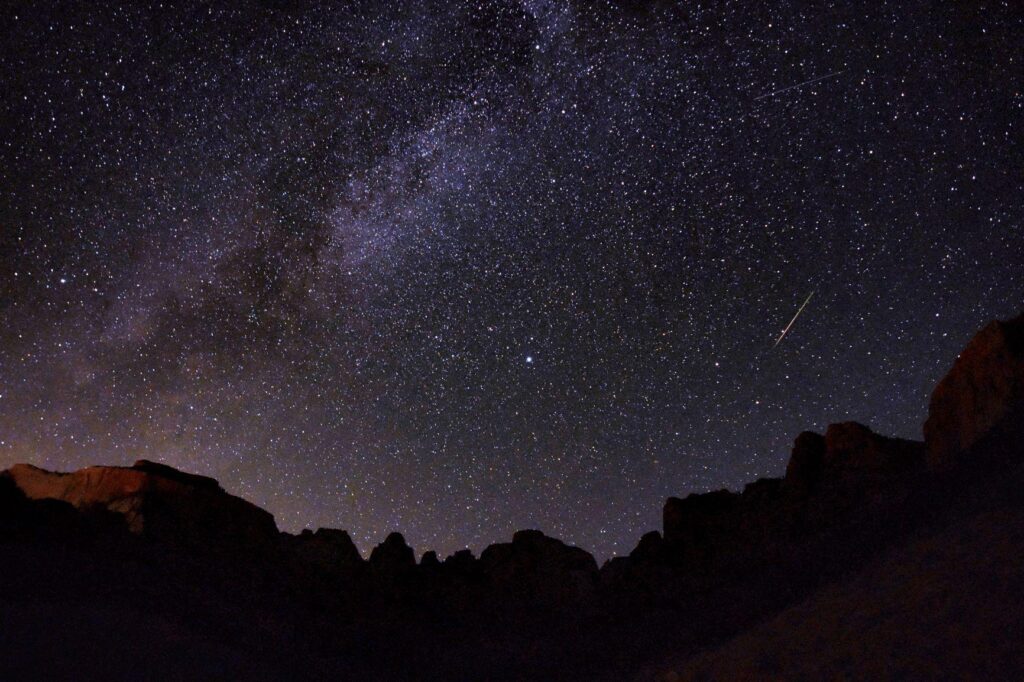At Zion National Park, nature whispers its ancient stories under a blanket of stars. While its red cliffs and winding canyons captivate during the day, the park transforms at night into a celestial theater unlike any other. Zion offers an extraordinary opportunity to reconnect—with the vast skies above, the natural beauty surrounding you, and a sense of wonder rarely found in everyday life.
For those seeking inspiration, restoration, and awe, stargazing in Zion is an unforgettable experience. This guide will lead you to the park’s best stargazing locations, provide practical tips on timing and preparation, and empower you to make the most of Zion’s sacred night skies.
Best Stargazing Spots in Zion National Park
Zion’s minimal light pollution ensures its night views are breathtakingly clear. Here are some of the park’s best locations to witness the stars in all their glory:
Canyon Junction Bridge
Nestled near the towering sandstone canyons, Canyon Junction Bridge offers a perfect mix of breathtaking scenery and unobstructed skies. With the Virgin River meandering below and the Watchman standing guard over the horizon, this spot frames the stars beautifully. Bring a camera with a tripod to capture remarkable long-exposure photographs.
Pro Tip
Visit here during a new moon for the darkest skies, and arrive early to secure your spot. While this area is tranquil at night, it’s one of the top locations for stargazers and photographers alike.
Lava Point Overlook
Perched at an elevation of around 7,890 feet, Lava Point Overlook provides unrivaled 360-degree views of Zion’s dramatic landscape. Elevated above much of the park, the lack of light interference ensures constellations shine bright. This serene location is a favorite for those seeking solitude and an intimate connection with the stars.
Pro Tip
Carry a blanket or a reclining chair to lie back and take it all in comfortably. The higher elevation might bring cooler temperatures, so dress warmly.
Zion Human History Museum Lawn
For those staying closer to the park’s main entrance, the lawn at the Zion Human History Museum offers superb stargazing views. With the glowing silhouettes of the sandstone cliffs framing your view, this easily accessible area is ideal for families or casual evening outings.
Pro Tip
Bring snacks and your gear early to enjoy the transition from sunset to starlit skies. Consider incorporating storytelling or reading about astronomy to make it a more immersive experience.
https://www.instagram.com/p/DKQsC8RxbKd/?img_index=1
Optimal Timing for Stargazing
The best time to stargaze in Zion depends on a mix of seasons, lunar phases, and weather conditions:
Seasonal Considerations
- Spring and fall typically provide the perfect balance of comfortable temperatures and clear skies.
- Winter offers some of the clearest skies free of haze or humidity, but temperatures can be freezing.
- Summer’s warm evenings are inviting, but you may encounter some haze or increased crowds.
Moon Phases
Dark skies are essential for optimal stargazing, so check lunar calendars and aim for a new moon or as close to it as possible.
Weather Matters
Clear skies are a must for pristine stargazing. Zion’s typically arid climate often works in your favor, but always check the forecast for cloud cover.
Essential Gear for Stargazing in Zion
Preparation can transform a good stargazing experience into an unforgettable one. Here’s what you should pack:
- Binoculars or Telescope to spot celestial details such as Saturn’s rings or the craters on the moon, even with limited equipment.
- Star Charts or Stargazing Apps like SkyView or Star Walk to identify constellations and planets effortlessly.
- Camera with Tripod to capture the magical beauty of Zion’s night scenes. Use manual settings to experiment with long exposure.
- Warm Layers and Blankets as nighttime temperatures can drop quickly, even in summer.
- Flashlight or Headlamp with a Red Light Setting to preserve your night vision while you set up or move around.
- Comfortable Seating like a foldable chair or mat for sitting or lying down as you immerse yourself in the experience.
Tips for Minimizing Light Pollution and Protecting the Night Sky
Zion’s unspoiled skies are a treasure worth preserving. Keep these low-impact practices in mind as you enjoy your night under the stars:
- Use minimal artificial light and switch to red light settings on your flashlights or cameras. This reduces glare while protecting your night vision.
- Camp Responsibly by keeping your nighttime campsite activities quiet and light pollution low. Avoid pointing campfire light upward.
- Plan your trek well beforehand to minimize the need for artificial light along trails. Familiarize yourself with paths and do a daytime run if needed.
- Educate Others about the importance of protecting Zion’s night skies. Share responsible habits with family and friends.
By practicing mindfulness, you’re not only preserving the environment but also ensuring future visitors can experience the same timeless beauty.
Zion’s Stargazing Experience Connects You to Something Bigger
Standing beneath the night sky at Zion is a transformational experience. Whether it’s your first time tracing constellations through the dark or you’re watching a shooting star streak across the heavens, Zion’s night skies invite you to pause, reflect, and rekindle your sense of wonder.
Where else can you connect with the legacy of ancient lands, the awe of cosmic beauty, and the restorative peace of nature all at once? Zion National Park’s mesmerizing night skies offer that and more.
If you’ve never experienced Zion by night, there’s no better time to start planning your adventure. Rediscover the sacredness of the stars above.
Pack your telescope and gear, and step into the celestial wonderland that is Zion National Park. The stars are waiting.

